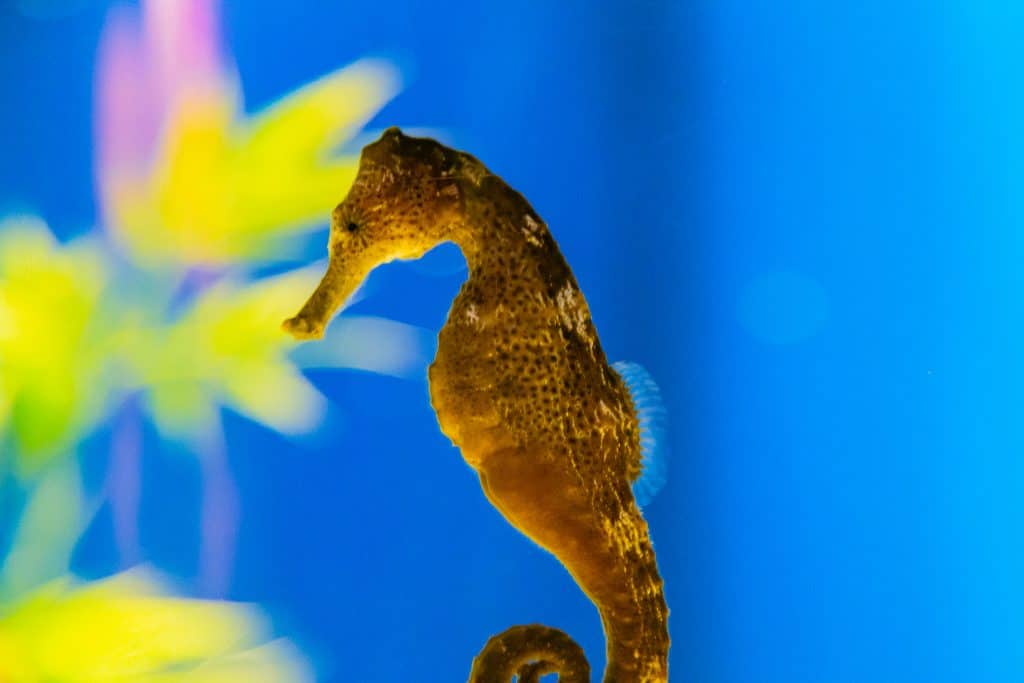Seahorses are true bony fishes with curved trunks, heads resembling a horse’s head, and tails capable of grasping and holding on to strands of seaweed or algae.
The smooth seahorse (Hippocampus kuda) is appropriately named as it lacks the spines common of other species. They are relatively rare (even after a population boom in 2005) and are most often seen in protected locations at shallow depths. They exhibit a mottled color from light to dark brown, depending on their surroundings.

Seahorses are the only fish species with a prehensile tail — a handy appendage for these weak swimmers as they cling to plants and other stationary objects. They commonly use their tail to wrap themselves on halimeda, other forms of seagrass, or even on the reef itself. They are known to travel in pairs and will link their tails together as they swim.
Male seahorses carry the eggs of baby seahorses and give birth to as many as 300 offspring at a time! The male seahorse will engage in a certain courtship dance in front of the female, which could last for hours. The female will then deposit her eggs into his pouch, where the “pregnant” male seahorse will incubate them until they hatch. For the smooth seahorse, the incubation period is 2 weeks.
*Due to the constant rotation of animals back to the ocean, we cannot guarantee the presence of any specific animal.
Seahorses are the only fish species with a prehensile tail!
Seahorses have no stomachs, so they must continuously graze to stay fed. They can consume more than 3,000 brine shrimp in a day’s work. We hatch and grow brine shrimp, or nauplii, at Maui Ocean Center, and at four days old, nauplii are fed to a number of animals, including seahorses.
Much like chameleons, seahorses can move their eyes independently. This comes in handy when searching for food!
Immerse Yourself in our SEA-News featuring Hawaiʻi’s marine life, inspirational conservation, and glimpses behind-the-scenes.
